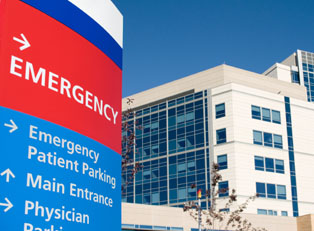Preterm, or premature, labor is a common but potentially serious complication of some pregnancies. Preterm labor is characterized by labor that begins before the 37th week of gestation -- nearly 75% of preterm infants are born between 34 and 36 weeks gestation. Although you may not be at risk for preterm labor, it’s important to know the signs and symptoms in case something happens. Here’s a look at what you need to know about preterm labor.
Braxton Hicks Versus Real Contractions
Preterm labor is the result of uterine contractions that cause the cervix to open early. The uterus normally contracts during pregnancy, as it tightens sporadically through the entire nine months. Braxton-Hicks contractions are a sort of practice contraction, allowing the uterus to get ready for actual labor.
Many women don’t begin to feel Braxton-Hicks contractions until the third trimester, while others notice them as early as four months. Braxton-Hicks contractions are irregular and won’t open the surface of the cervix. They become more prominent when lying down or when the bladder is full. Contractions that are regular (e.g. every 8 to 10 minutes for at least an hour) or significantly more intense than Braxton Hicks may be a sign of preterm labor.
Warning Signs of Preterm Labor
In addition to contractions, be aware of other signs of preterm labor including:
- Leaking or gushing of watery vaginal fluid (may indicate that your water has broken)
- Menstrual-like cramps
- Abdominal cramps (with or without diarrhea)
- Five or more contractions within a 60-minute period
- Dull, lower back pain
- Sudden, discolored, or excessive discharge from the vagina
- Intense pelvic pressure (may indicate the baby pushing down)
- Leaking of bright red blood from the vagina
- Pain during urination (may also indicate bladder infection or UTI)
If you notice these signs of premature labor, contact your obstetrician or midwife immediately.
Risk Factors of Preterm Labor
Having the risk factors associated with preterm labor doesn’t necessarily mean you’ll experience preterm labor. It does, however, increase the chance of preterm complications and the importance of being aware of the signs.
If you’ve experienced two or more second trimester miscarriages or abortions, preterm labor in previous pregnancies, an increased amount of amniotic fluid, or bleeding after the 20th week of gestation, you may be considered higher risk. Other risk factors include misshapen uterus, cervical cerclage (stitch) or abdominal surgery, prior LEEP procedure (to diagnosis/treat women with abnormal Pap tests) or cone biopsy, recurrent UTIs or bladder infections, fever of more than 101 degrees Fahrenheit during pregnancy, or dehydration.
You may also be at a greater risk for preterm labor if you’re pregnant with more than one baby or if your mother was prescribed diethylstilbestrol (DES) to prevent miscarriage while pregnant with you. Excessive emotional or physical stress, cigarette smoking, or the misuse of illegal, prescription, or recreational drugs may also lead to preterm labor.
Prevention of Preterm Labor
Early contractions may be controlled if treated immediately. Staying well hydrated keeps oxytocin levels at a normal rate, which helps control contractions. Treating minor infections, such as yeast infections or UTIs, can also help prevent preterm complications. Attending prenatal doctor appointments regularly and reporting any unusual symptoms will increase your chances of a safe and healthy pregnancy as well. Unfortunately, there’s no guaranteed means of preventing preterm labor or delivery.



